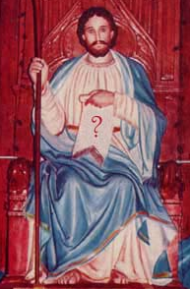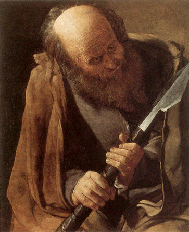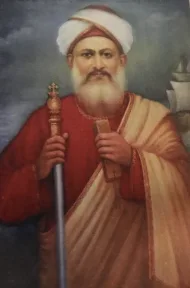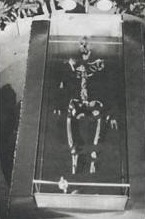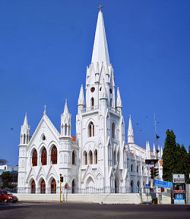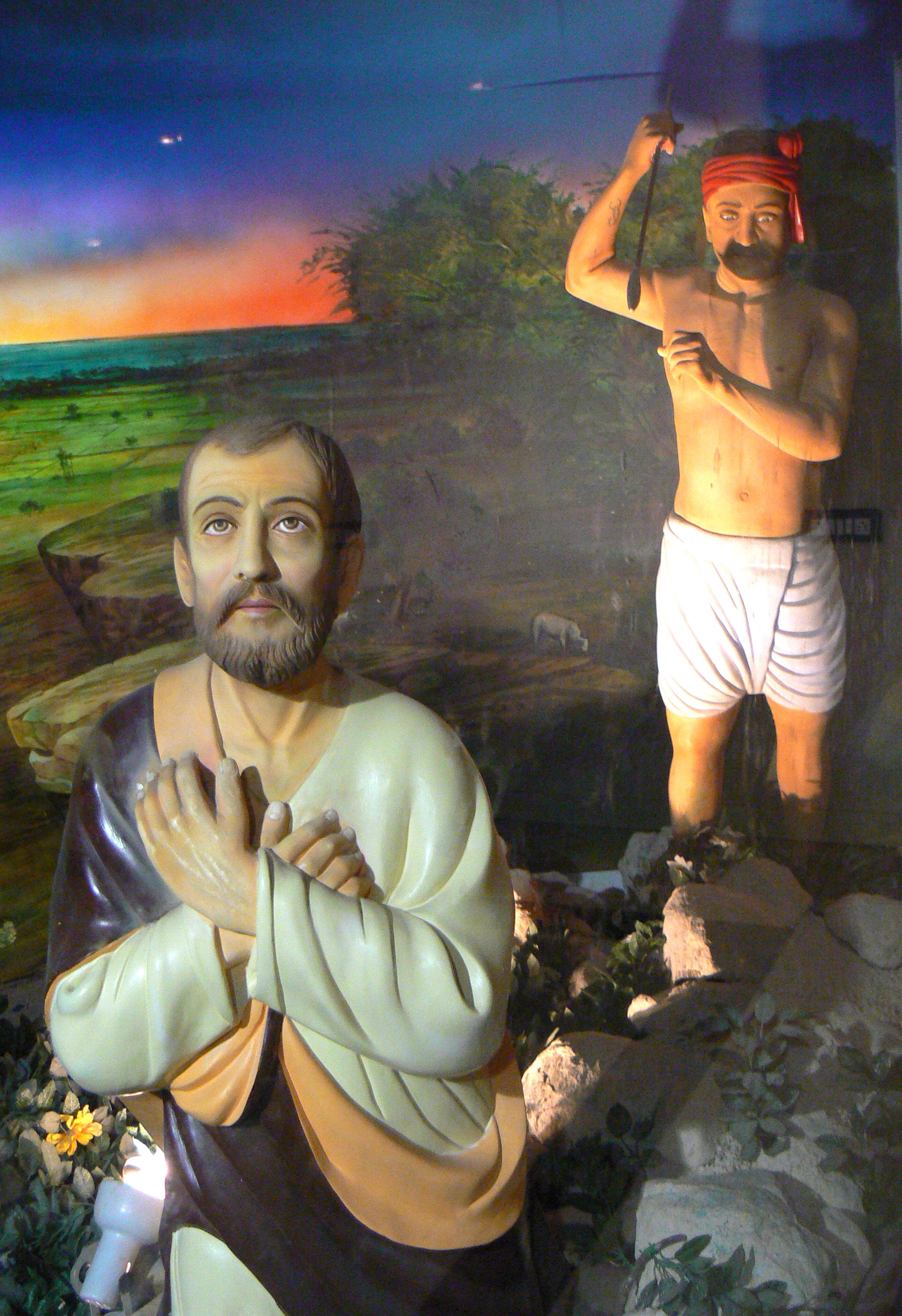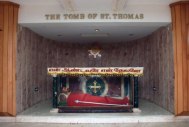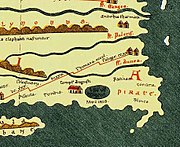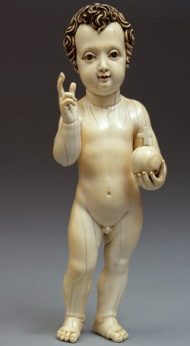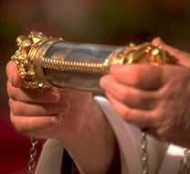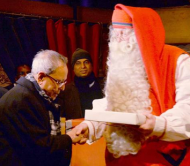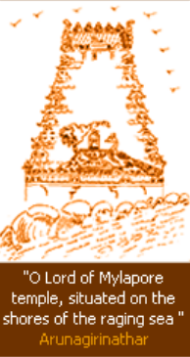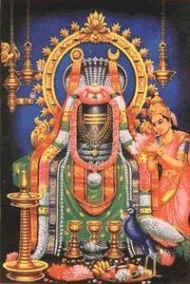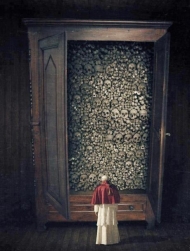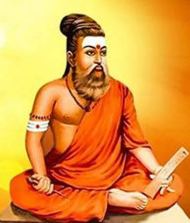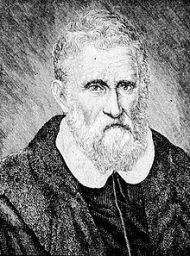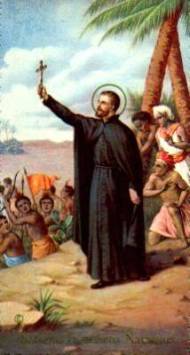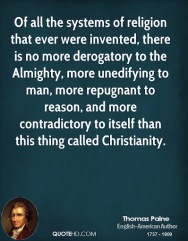This article is a rejoinder to S. Muthiah’s column “The Mount of Thomas” on 7th January 2004 in The Hindu, Chennai.
All eminent historians writing on colonial India describe the devastation of Mylapore and its environs by the Portuguese in the 16th century. The respected Mylapore archaeologist Dr. R. Nagaswami, who has worked on San Thome Cathedral with the Jesuits, tells of the destruction of Jain and Buddhist temples along with all of the buildings of the Kapaleeswarar Temple on the Mylapore beach. Before him the Portuguese historian Gaspar Correa describes a holocaust that extended from Mylapore to Big Mount, south of the Adyar River. Even the St. Thomas protagonist Archbishop Arulappa admitted that Hindu temples once stood on the sites now occupied by St. Thomas–related churches in Madras, at Mylapore, Saidapet, and Big Mount now called St. Thomas Mount.
But the true story about the annihilation of Mylapore, the ancient Hindu and Buddhist pilgrimage town established long before the Christian era, is not to be told by today’s self-appointed guardians of Chennai heritage. The truth is not overtly denied, it is simply not admitted, and is covertly replaced by a fabulous Christian tale about St. Thomas coming to Mylapore in 64 C.E. and getting himself killed eight years later on Big Mount. The tale turns the victims of a holocaust into the slayers of an important Christian saint, the doubting apostle of the Gospels, and–yes!–the twin brother of Jesus, no less. With this story to cover up the true story of Mylapore, Hindus can be made into “Christ killers” just like the Jews before them, and treated accordingly—damned and reviled by the Christian power then, the Portuguese, and damned and censored by the Christian power now, the Americans who, like the Portuguese, use Christianity to give them moral authority for their imperial expeditions, and as a means to gain influence and sympathy through converts in an India that they wish to dominate.
The main champion of St. Thomas in Madras today, besides the Catholic Church who owns the shrines and collects the money, is the Sri Lanka-returned journalist and producer of picture books, S. Muthiah, who got his stripes sitting at the feet of the notorious Indian Express columnist Harry Miller, Muthiah’s current patron is The Hindu, an obloquial communist rag that is known up and down Mount Road as “The Dinosaur” because it is big and old and dumb, and makes so much noise as it lumbers along through the capitalist swamps of secular, socialist India. Its editor is an ideological Neanderthal called N. Ram.[1] His forte is “secularism” which, in today’s political parlance, means he is anti-national and anti-Hindu. He believes that China is the great leader and assiduously follows the Chinese two-systems system in his newspaper–economic freedom and political oppression for all. His opinion columns are filled with gloom and doom, and the rest of the paper is given over to the celebration of consumer goods for the urban rich. One of the special items for sale on January 7th, 2004, was the tale of St. Thomas in an article called “The Mount of Thomas” by S. Muthiah (since removed from The Hindu website or behind a paywall).
Muthiah, himself an editor of sorts at Madras Musings, opens his article on the glorification of the Portuguese churches at Little Mount and Big Mount with a disclaimer of sorts. He says he is going to do a little unhistorical storytelling, and pretends that he can only just recall our book, The Myth of Saint Thomas and the Mylapore Shiva Temple when in fact he received copies of it when he was an editor at another communist rag The Indian Review of Books. He did not review the book, of course, and to our knowledge has never done any research of his own on the St. Thomas legend except to consult Catholic religious pamphlets and visit the St. Thomas churches. Muthiah would like to dismiss us, deport us to one of Uncle Joe Stalin’s gulags for truth-tellers. He and his editor at The Hindu, had they any conscience at all, would be deeply troubled by the reality that it is a foreign sadhu in India for religious reasons, without means or influence, who has had to find out the facts and expose the St. Thomas fraud in Madras. They have not had the intellectual integrity or courage to do the work themselves. Muthiah then has the presumption to advise us to be tolerant as he proceeds to mislead the public, as much as by what he does not say as by what he does, about the cave and two churches which were earlier Hindu shrines destroyed by the Portuguese. Muthiah is a very astute propagandist, a very persuasive man engaged in a cover-up. He would be better employed selling used cars. He writes:
“Several years ago, there was an American (?) turned Hindu ascetic who was never happy whenever I wrote of Thomas Didymus, the Apostle of India. In fact, he wrote a book, I recall, devoting a considerable and angry part of it to my unhistorical approach to the legend of Thomas in particular. I don’t know whether he’s still around, but if he is, I wish he’d realize that articles of faith, like his own, are not disputable, calling, instead, for tolerance. And that a little unhistoric story-telling, like today’s does no one any harm.”
Muthiah’s claim that the St. Thomas legend is an article of faith is a travesty of Christian doctrine. It is an emotional appeal, an attempt at moral blackmail. He is deeply committed to hiding the historical facts, and would like Madras citizens, Christians and Hindus alike, to accept the legend at face value—he would like them to accept it as Indian history. He would also like them to condemn us for intolerance when we expose the story, and the way it is manipulated by interested parties like himself and his editor, as a fraud. He has invested a lot of money and prestige in the legend. But our concern is Madras history and not Muthiah’s social standing at the Madras Club. We wrote The Hindu editor on January 16th, with a copy of the letter to S. Muthiah. We said:
Mr. Muthiah’s patronizing reference to me in the first paragraph of his Jan. 7th article, “The Mount of Thomas”, so typical of the self-righteous Indian (?) scribe, is wrong on two counts and deserves a reply. First, as I have shown in my book, The Myth of Saint Thomas and the Mylapore Shiva Temple (Chapter 19 and also the Vatican letter published on Acta Indica, the legend of St. Thomas in Madras is not an article of faith in the Catholic Church at all, though it can be said to be a dearly held sentiment among some Christian believers; and secondly, an article of faith or religious sentiment of a particular religious community can be tolerated in a pluralistic society so long as it does not intrude on or demean the beliefs and sentiments of another and different religious community. My quarrel with Mr. Muthiah and the English-language media that promote the St. Thomas legend, is that the legend does indeed intrude on and vilify the Hindu community. It falsely implicates a Hindu king and his priests in the persecution and murder of a Christian apostle and saint, and there is good reason to believe that this maligning of the Hindu community is exactly what is intended today when the legend is promoted and repeated ad nauseam by the Catholic Church and her agents in the press. In fact, the Hindu community is doubly wronged. It not only did not kill the fictional St. Thomas, but for the saint’s cause it lost a number of important temples to the aggressive religious bigotry of the Portuguese. It took more than fifty years for the Portuguese to bring down the original Kapaleeswarar Temple and build a St. Thomas Church in its place. I wonder how many Indian lives were lost in defence of the Great God Shiva and His house on the Mylapore beach? And has Mr. Muthiah, the self-important Madras city reporter after Harry Miller, ever considered writing a panegyric to these forgotten martyrs—true martyrs!—of a universal and tolerant faith?
This letter was ignored, of course. The reader’s right of reply is not recognised at The Hindu, though the media mafia who operated the newspaper make a lot of noise about press freedoms when they fancy their own freedoms are under attack. Other concerned readers sent protests to the editor, including the Tamil scholar Veda Prakash, himself an expert on Mylapore history and the St. Thomas legend. He had analysed the article and called for a full scientific investigation into the various alleged St. Thomas relics held in the churches, despite Muthiah’s claim that articles of faith are not disputable. His letter caused great consternation in the newspaper’s office. The editor cannot deny the validity of his request, nor, for that matter, can the Bishop of Madras-Mylapore.
But, notwithstanding the attempts of The Hindu to silence us, the article attracted a large number of visitors to our now defunct website Hamsa.org over the week after publication. We are satisfied that the facts of a controversy created by the press and suppressed by the press when they are caught in the lie and challenged, is now reaching an interested public worldwide.
1. This writer once had the misfortune of meeting The Hindu editor, N. Ram. He arrived one morning in 1992 on our ashram doorstep with a Muslim friend. He did not identify himself except to say that his name was Ram, and was eager to push forward his companion. Finally, his manner radiating hostility, he asked us our opinion about the demolition of the disputed building called Babri Masjid in Ayodhya earlier in the year. We replied that we did not feel that Muslims had any vested interest or claim in Ayodhya. It was a Hindu pilgrimage town for many centuries and had no religious value to Muslims. The disputed building was a victory monument built by a foreign invader’s governor who had wished to subdue and intimidate the local Hindu inhabitants. We wondered how Indian Muslims, the citizens of a free and independent India whose religious rights were protected, could place any value on such a structure? There was a dead silence for a minute after this reply, while Ram glared at us menacingly (his Muslim companion had closed his eyes and sunk down in his chair). “No use talking to you,” he growled, and got up and stomped out of the room with his companion in tow.
“Who was that?” I asked the Mataji of the ashram later. “Oh, that was Ram of The Hindu,” she said, laughing. “You can be sure of a bad press from now on! You had better find another name to write under. The one Ram knows you by will be on every media black list by tomorrow.” And so it has come about. Jai Sri Ram!




